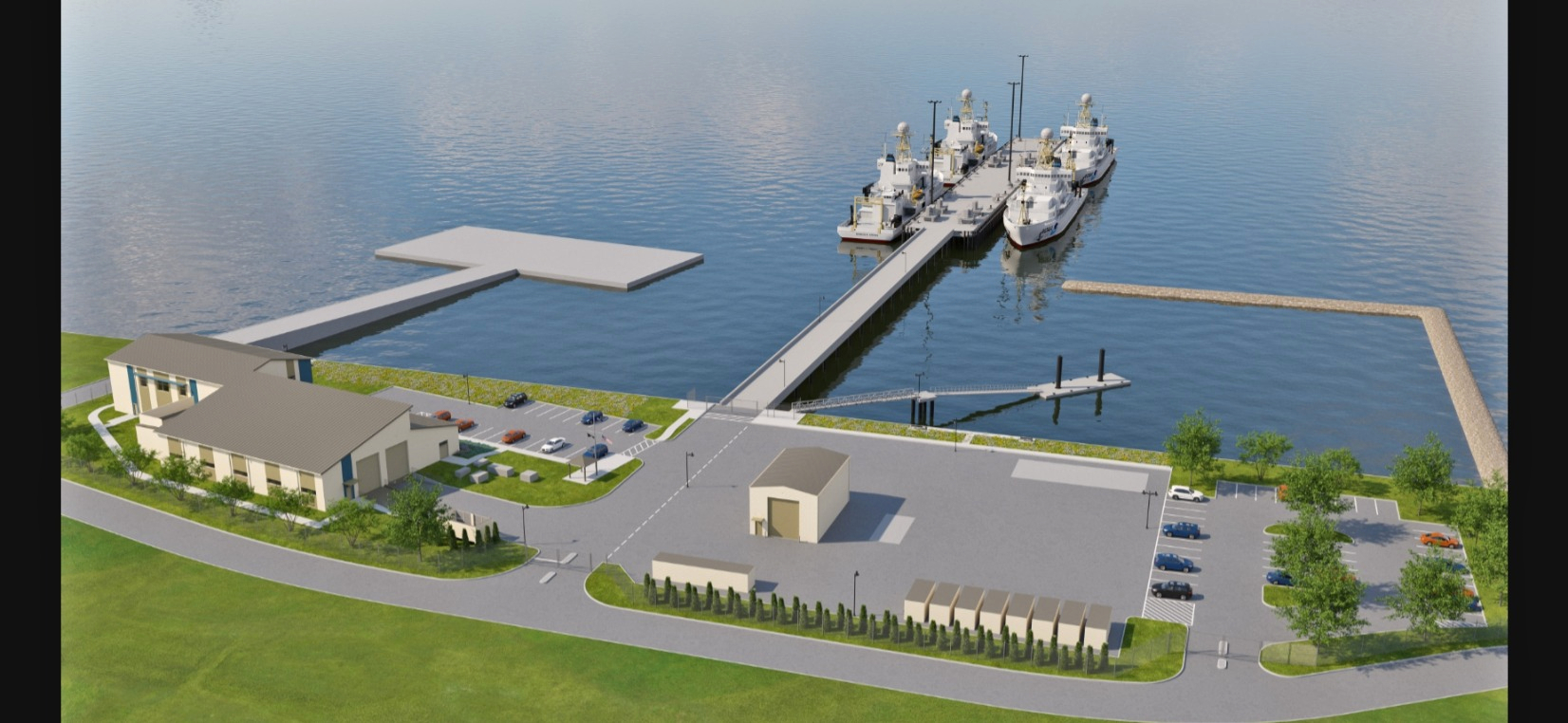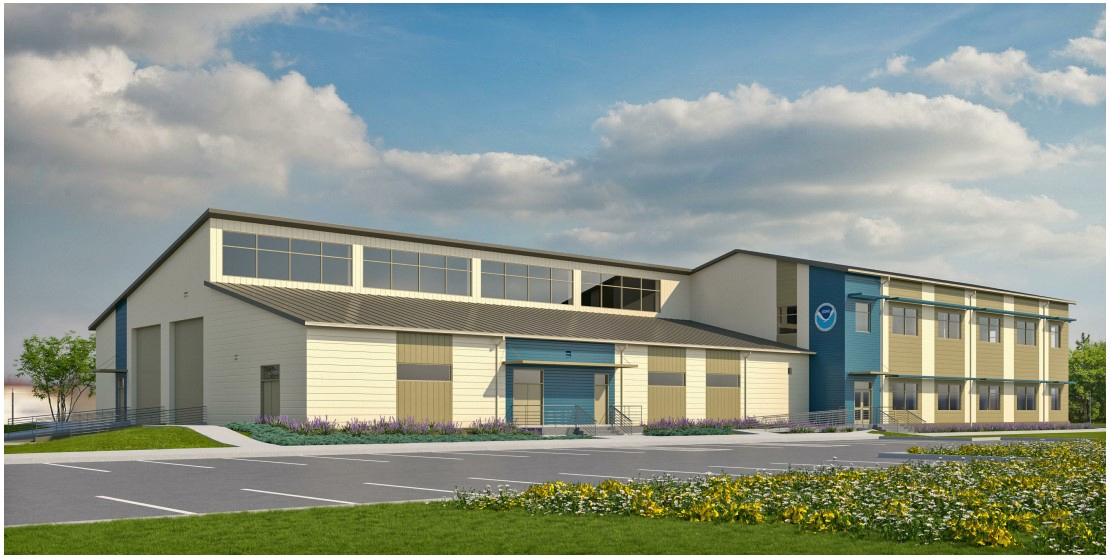After Working to Bring NOAA Hub to RI, Reed Helps Break Ground on New MOC-A Complex at NAVSTA Newport
NOAA Marine Operations Center – Atlantic expected to complete move from Norfolk, Virginia to Naval Station Newport by 2027 with a brand new $150 million shoreside facility as well as pier and floating dock
NEWPORT, RI – The National Oceanographic and Atmospheric Administration (NOAA) is increasing its presence along the Newport waterfront and bringing some premiere ocean research jobs, vessels, and operations to the Ocean State.
After working for more than a decade to help efficiently consolidate federal resources for ocean exploration and marine research in Rhode Island, U.S. Senator Jack Reed today joined U.S. Secretary of Commerce Gina Raimondo; the head of NOAA, Rick Spinrad, Ph.D.; NOAA Corps Rear Admiral Nancy Hann, director of NOAA Marine and Aviation Operations and the NOAA Commissioned Officer Corps; Governor Dan McKee; U.S. Senator Sheldon Whitehouse; Congressman Gabe Amo; and other special guests for a groundbreaking ceremony on a 5 acre site at Naval Station (NAVSTA) Newport for NOAA’s new Marine Operations Center - Atlantic (MOC-A).
The MOC-A coordinates NOAA’s ships operating in the Atlantic Ocean and Great Lakes and serves as a homeport for some of NOAA’s flagship research vessels
The MOC-A is moving from Norfolk, Virginia to Naval Station Newport in Rhode Island, a secure facility used by both the U.S. Navy and U.S. Coast Guard, and in close proximity to the University of Rhode Island’s Graduate School of Oceanography.
When it is completed, the new $150 million NOAA hub will help support jobs on land and at sea. While many NOAA workers will serve aboard research vessels for long stretches as they conduct oceanographic research missions, there will also be dozens of shoreside NOAA employees based at the new facility responsible for monitoring and supporting the research fleet at sea. Jobs at the new facility will include marine engineers, electrical technicians, budget specialists, and medical support staff and human resources administrators.
Approximately 60 NOAA staffers worked at the NOAA MOC-A office in Norfolk, while many more also worked aboard vessels and were based in the area when not at sea.
“I was pleased to help Rhode Island land NOAA’s regional headquarters for Atlantic operations. This will be a first-class facility. It will be a major asset for NOAA that will help further their important mission and make them more efficient, achieving cost savings for taxpayers while bringing jobs to Rhode Island,” said Senator Reed.
NOAA has long planned to consolidate its fleet and upgrade its facilities and Senator Reed, a senior member of the Appropriations Committee and the Chairman of the Senate Armed Services Committee, successfully worked to ensure Rhode Island was best-positioned to be the homeport for the MOC-A and four major NOAA research vessels.
In December, the U.S. Navy, on behalf of NOAA, announced a $146,778,932 contract for Skanska USA to build the new 22,000 square foot facility, which will serve as the headquarters for NOAA’s Atlantic fleet.
Funded in part by the Inflation Reduction Act, the new NOAA facility will also include a pier that will accommodate four large vessels, a floating dock for smaller vessels, space for vessel repairs, and parking, and a warehouse.
Work has been underway for about five months and the project is expected to be completed in the summer of 2027.
“NOAA is the top scientific weather and oceans agency and I was pleased to help Rhode Island land MOC-A. Naval Station Newport’s location and the years of strategic federal investments we’ve made here are really paying off. Bringing NOAA’s premiere research fleet and Atlantic operations center to the Ocean State means hundreds of jobs for Rhode Island and a brighter future for our Blue Economy,” said Senator Reed.
Currently, NOAA has two ships homeported at Naval Station Newport’s Pier 2 on Narragansett Bay: the 209-foot Henry B. Bigelow (R 225), which is a fisheries research vessel, and the 224-foot Okeanos Explorer (R 337), known as “America’s ship for ocean exploration,” which is dedicated to oceanographic research and conducts operations around the globe, including mapping the seafloor.
A third NOAA ship is slated to homeport at NASTA Newport: Thomas Jefferson (S 222) is a 208-foot long deep-water hydrographic survey ship that uses sonar to map the bottom of the seafloor and provides data that informs the management of fisheries, navigation safety, ice models, hydrodynamic models, and geological work.
Additionally, a fourth NOAA vessel that will be homeported in Newport is now under construction: the 244-foot Discoverer, which will be a state-of-the-art oceanographic research vessel, is currently being built in Louisiana. The ship’s sponsor is Second Gentleman Douglas C. Emhoff, and the ship is scheduled to join the fleet in 2026.
Overall, NOAA’s fleet currently includes fifteen oceanographic research vessels, fisheries survey vessels, and hydrographic survey vessels.
The ships in NOAAs Atlantic fleet are operated, managed, and maintained by NOAA Marine and Aviation Operations. They collect data essential to protecting marine mammals and ocean ecosystems, managing commercial fisheries, understanding climate change and producing nautical charts that help keep mariners safe. NOAA ships also deploy and help maintain buoys that gather oceanographic and weather information and warn of tsunamis. NOAA ships are operated by NOAA Corps officers and civilian professional mariners.

